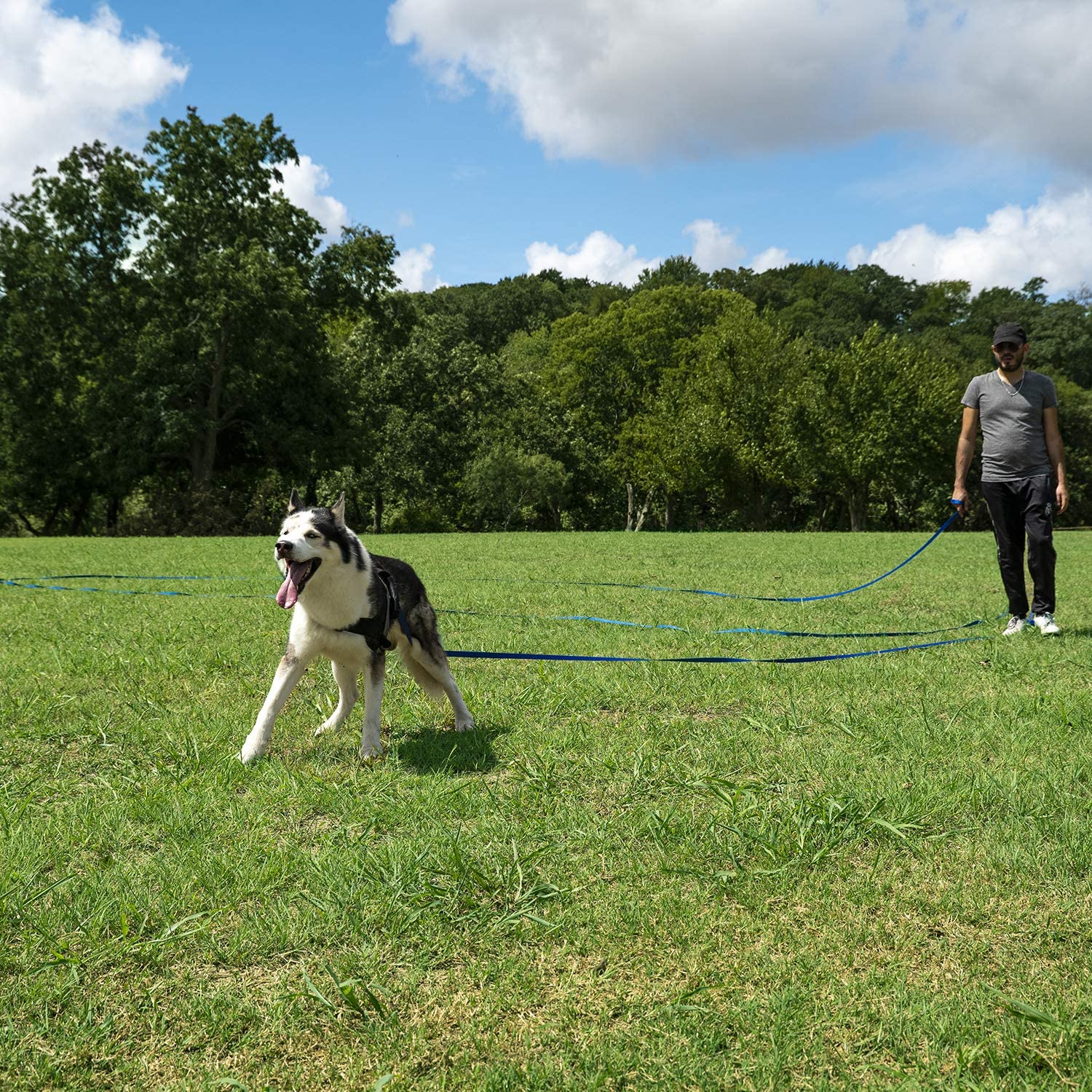
Training your Sheltie to come when called is an essential part of owning a happy and well-behaved dog. As natural herders, Shelties can be prone to wandering off or chasing after things that catch their eye. This can be dangerous, especially if they end up in a busy street or near other hazards. Teaching your Sheltie to come when called can help prevent these situations and give you peace of mind.
In this article, we will discuss some tips and strategies for training your Sheltie to come when called, so you can enjoy a safe and fulfilling relationship with your furry friend.
Note: For a complete training, we highly recommend this SpiritDog Online Training Course “Coming When Called”.
1. Start with a Strong Foundation
Before you begin training your sheltie to come when called, it’s crucial to establish a strong bond with your pet. Spend time playing with your dog, engaging in activities they enjoy, and providing positive reinforcement through praise and treats. Building trust and a strong connection with your sheltie will make them more likely to respond positively to your commands.
2. Choose a Distinct Command Word
Select a specific word or phrase for the recall command, such as “come” or “here.” Ensure that the command is distinct from other commands you use and that all family members use the same word consistently. Consistency is critical to avoid confusing your sheltie and ensuring that they understand what you expect from them.
3. Begin Training Your Sheltie in a Controlled Environment
Start training your sheltie to come when called in a controlled, distraction-free environment like your home or a fenced yard. In the early stages of training, it’s essential to minimize distractions to help your dog focus on learning the new command. As your dog becomes more reliable in responding to the recall command, gradually introduce distractions and practice in various environments.
4. Use Positive Reinforcement with Your Sheltie
When training your sheltie to come when called, always use positive reinforcement techniques. Reward your pup with praise, treats, or playtime when they respond to your recall command. This will help create a positive association with the command and motivate your dog to respond consistently. Remember to be patient and consistent in your training, as it may take time for your dog to master the recall command.
If you’re using treats, these are currently the most popular training treats on Amazon.
5. Gradually Increase Distance and Distractions
As your sheltie becomes more reliable in responding to the recall command in a controlled environment, begin to increase the distance between you and your dog during training sessions. Practice calling your dog from various distances and gradually introduce distractions, such as other dogs, people, or toys. This will help your dog learn to respond to the command even in challenging situations.
Related: Looking for the fastest way to train your sheltie to come when called? Try this video course.
6. Make Yourself Interesting and Rewarding to Your Sheltie
To encourage your sheltie to come when called, make yourself more appealing and rewarding to your dog. Use an enthusiastic, high-pitched voice when calling your dog, and reward them with a treat or praise when they respond. You can also try running away from your dog when calling them, as this can entice your dog to chase after you and respond to the recall command.
7. Never Punish Your Sheltie for Coming When Called
It’s essential to avoid punishing your sheltie if they do not immediately respond to the recall command or if they come to you slowly. Punishing your dog can create a negative association with the command and make them less likely to respond in the future. Instead, be patient and continue to practice and reinforce the command using positive reinforcement techniques.
8. Practice the Recall Command Regularly with Your Sheltie
Consistent practice is crucial for training your sheltie to come when called. Incorporate recall training into your dog’s daily routine, and practice the command in various environments and situations. This will help reinforce the behavior and make it more reliable over time.
9. Use a Long Training Leash on Your Sheltie
When transitioning from a controlled environment to a more open space, consider using a long training leash to maintain control over your sheltie while they learn to respond to the recall command. This will help you avoid losing control of your dog and provide a safety measure as you gradually increase the distance and distractions during training sessions.
This is the most popular long training leash on Amazon.
10. Be Patient and Persistent with Your Sheltie
Training your sheltie to come when called takes time, patience, and persistence. Some dogs may learn the command quickly, while others may require more time and consistent practice. Be patient with your dog and maintain a positive attitude during training sessions. Remember that every dog is unique, and the key to success is consistent practice and positive reinforcement.
11. Use a Professional Online Sheltie Training Course
While this article provides many helpful tips for training your sheltie, you can increase your chances of success by enlisting the help of a professional online dog trainer. We love the SpiritDog online courses, since its includes unlimited questions with a real dog trainer.
You can check out their Teach Your Sheltie to Come Online Course Here
In conclusion, training your Sheltie to come when called requires patience, consistency, and positive reinforcement. By using the techniques outlined in this article, such as starting with short distances and gradually increasing distance and distractions, you can successfully train your Sheltie to come when called in any situation. Remember to always use positive reinforcement, such as treats and praise, and to avoid punishment or negative reinforcement, which can damage the trust between you and your furry friend. With time and practice, your Sheltie will learn to come when called, making for a safer and more enjoyable relationship between you and your beloved pet.
More Frequently Asked Questions For Training Your Sheltie
Training your Sheltie can be a rewarding experience, but it’s normal to have some questions along the way. In this article, we will address some of the most frequently asked questions about training your Sheltie.
1. How do I stop my Sheltie from jumping on people?
Shelties are naturally friendly and social dogs, but jumping on people can be a problem behavior that needs to be addressed. Here are some tips for stopping your Sheltie from jumping on people:
- Ignore the behavior: When your Sheltie jumps up, don’t give them any attention or physical contact. Turn your back and walk away until they calm down.
- Redirect their attention: If your Sheltie is jumping because they are excited, try redirecting their attention to a toy or a training activity.
- Teach them an alternative behavior: Teach your Sheltie to sit or lay down on command instead of jumping. Reward them with treats and praise when they do the desired behavior.
- Consistency is key: Be consistent with your training and don’t let your Sheltie get away with jumping on people, even if it’s only once in a while.
Remember, jumping on people can be dangerous, especially for children or elderly people, so it’s important to address this behavior as soon as possible.
2. How do I socialize my Sheltie?
Shelties are social dogs that thrive on human companionship and interaction, but they also need to be socialized with other dogs and animals to prevent fear and aggression. Here are some tips for socializing your Sheltie:
- Start early: Socialization should start as soon as possible, ideally when your Sheltie is a puppy. The earlier they are exposed to new people, places, and experiences, the better.
- Take it slow: Introduce your Sheltie to new people and animals slowly and in a controlled environment. Gradually increase the intensity and duration of the interactions as your Sheltie becomes more comfortable.
- Positive reinforcement: Reward your Sheltie with treats and praise when they exhibit good behavior during socialization. This will reinforce their positive associations with new experiences.
- Expose them to different environments: Take your Sheltie to different places, such as the park, the beach, or a busy city street, to expose them to different sights, sounds, and smells.
Remember, socialization is an ongoing process that should continue throughout your Sheltie’s life. By socializing your Sheltie, you can help prevent fear and aggression and create a happy, well-adjusted dog.
3. How do I teach my Sheltie to stop barking excessively?
Shelties are known for their vocal nature, but excessive barking can be a problem behavior that needs to be addressed. Here are some tips for teaching your Sheltie to stop barking excessively:
- Identify the trigger: Pay attention to what triggers your Sheltie’s barking, such as the doorbell, strangers, or other dogs.
- Teach them the “quiet” command: When your Sheltie starts barking, say “quiet” in a firm but calm voice. When they stop barking, reward them with treats and praise.
4. What’s the best online course for teaching a sheltie to come when called? At iHeartDogs, we recommend the SpiritDog online course “Coming When Called.” The course includes unlimited questions with a real dog trainer.
iHeartDogs is reader supported. Our articles contain affiliate links where we are paid a small commission for linking to a product at no additional cost to the reader.



 Toledo, United States.
Toledo, United States.